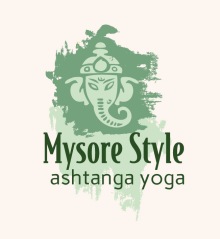Ashtanga Yoga has a bit of a reputation amongst the uninitiated for being strict, rigid, uncompromising. It is not generally seen as a practice which anyone can do. It is said that one has to be fit, able-bodied and energetic. You might have had the experience of being asked “Oh Ashtanga, that’s the really hard one isn’t it?” (that’s usually the second question though, the first is “Is that the one in the hot room?” – after I say no to that one, most people lose interest; I don’t know why)
However, those of us who have been practising for a while (and have therefore had a chance not just to practise but also to reflect a little on its nature) realise that this is a fluid practice which changes on a daily basis for all practitioners. We also cannot help but notice that the way we practise (and even the way we learn the method of practice) is different for each individual, even for Surya Namaskara A. The practice is for anyone who wants to do it. And everyone practises it differently.
We also realise through practice that this primary series is a fantastic therapy. Before the “first, second, third series” etc. became the usual way to refer to the different sequences, the ‘primary’ series was known as Yoga Chikitsa (Yoga Therapy). The primary series is intended to heal the body. This is a practice which can be learned by anyone.
I have heard Sharath repeat this (or variations on it) many times:
“Young man can practise.
Old man, he can practise.
Very old man, he can practise.
Man who is sick, he can practise.
Man who does not have strength, he can practise.
Only lazy people can’t practise.”
Then he cracks up laughing.
Every time.
Before there were so many western yoga students travelling to Mysore, Guruji had many many therapy cases; very sick and even partly paralysed students would go to him and he would slowly help them to regain their health and mobility bit by bit, getting warm blood flowing in their bodies. Even in our limited experience of teaching this yoga we have seen the therapeutic power of the asanas both in a general sense and for aiding with specific injuries and illnesses.
The therapeutic effect is also there on a mental and emotional level. We have heard many times of students whose mental health has improved through the practice of asanas (such as help with depression or addiction) or of people who feel like they have gained enough clarity in their lives and in their minds to begin making healthier choices (like leaving destructive relationships, gaining control over their diet or starting a new career). There is something about practising Ashtanga every day that makes everything else seem more straightforward.
I am a very firm believer in the adage that if you can breathe you can practice. Spread the word.
Ekam, inhale. Dwe, exhale. Trini, inhale.
Just those first three vinyasas might be enough to change the course of somebody’s life. The rest of the asanas are just embellishments of that.

